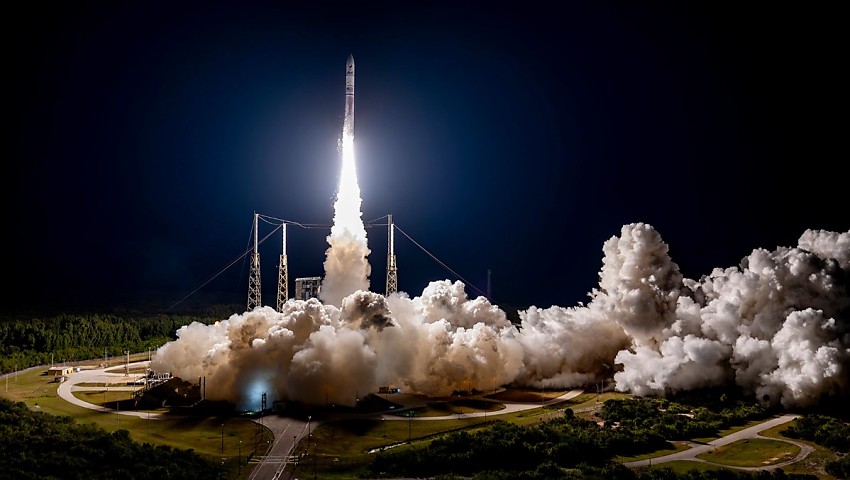The Vulcan rocket was developed under a joint venture between Boeing and Lockheed Martin.
However, a malfunction in the propulsion system of one of its client’s payloads, a lunar lander, means that the spacecraft is now unlikely to reach the moon’s surface.
Peregrine lander was scheduled to attempt the first private moon landing in February, carrying payloads from seven countries, including scientific research by both the UK and US space agencies.
Despite the hitch, the blast-off will be seen as a huge success for provider United Launch Alliance (ULA), a joint venture between primes Boeing and Lockheed Martin.
ULA was formed in 2006 and was the only US launch company certified to send national security payloads into orbit for nine years.
Previously, it had used the Delta IV vehicle, developed by Boeing, and the Atlas V, developed by Lockheed.
The Vulcan is designed to replace both capabilities at a lower cost and eventually compete against SpaceX, which sent nearly 100 rockets into orbit last year.
ULA’s chief executive officer, Tony Bruno, called the 2:18am lift-off a “dead on bullseye orbital insertion”.
Already, ULA has a backlog of 70 missions to fly on the next-generation Vulcan, including 38 for an Amazon-backed rival to Starlink, alongside those from the US Space Force.
“What’s unique about Vulcan, and what we originally set out to do, was to provide a rocket that has all the capabilities of Atlas and Delta in one single system,” said Mark Peller, ULA’s vice-president in charge of the Vulcan’s development.
“Because we do have that adjustability, its configuration can be really tailored to the specific mission.”
In contrast, Astrobotic, the US company that built the failed Peregrine payload, admitted a failure within the propulsion system led to a critical loss of its propellant.
“The team is working to try and stabilise this loss, but given the situation, we have prioritised maximising the science and data we can capture. We are currently assessing what alternative mission profiles may be feasible.”
The technical glitch is thought to have involved its solar cells pointing away from the sun, blocking its energy source. Afterwards, the propellant leak was discovered by the team.
NASA’s chief, Bill Nelson, had hoped the independent project, which it backed with $108 million to carry five experiments, would be a “giant leap for humanity”.
The US space agency hopes to supplement its Artemis missions with commercial projects to help eventually facilitate the creation of a human base on the moon.
It’s in addition to NASA working with Australia to create a lunar rover that can collect lunar soil that will eventually be turned into oxygen to support astronauts.
Currently, two collaborations, ELO2 and Arose, are building prototypes.


